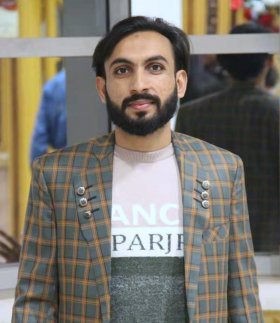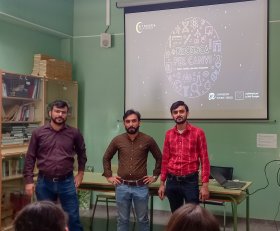Gohar Ijaz Dar


PhD Programme: Technologies for Nanosystems, Bioengineering and Energy
Research group: NePhoS – Nano-electronic and Photonic Systems
Supervisor: Lluís Francesc Marsal Garví
Bio
Gohar Ijaz Dar obtained his Bachelor degree in Physics form University of Wah, Pakistan, in 2015, and Master's degree in Materials physics and Chemistry from Chinese Academy of Sciences CAS, China in 2020. During his stay in China, he worked on magnetic Nano materials and specified thesis on Image Guided photo thermal therapy of cancer cells. Based on Master project, he had published articles, review articles and book chapters. His Master research was fully funded by highly competitive CAS BELT and Road Scholarship. He is now enrolled as PhD.
Project: Advanced nanostructures for photonic biosensors
The performance of a photonic biosensor depends on the photonic structure used. For this reason, we will study several photonic nanostructures and the way to improve their light-matter interaction to enhance the sensitivity and limit of detection. Further improvement of the biosensors is expected by combining metals - nanostructure and plasmonic effects. From the relationships between geometrical parameters and photonic properties, structures that maximize sensitivity for each type of analyte (proteins, enzimes, bacteria, metal ions, or drugs) will be obtained, paying special attention to the process of transduction between the recognition event and the measured optical property (resonance or shift wavelength, interfectometric spectroscopy, surface plasmon renosonace, etc). A fundamental process in a biosensor is the entrapment and selective detection of the analytes. For this reason, is necessary to determine the chemical properties of the surface providing the highest affinity and selectivity for the target analytes with no interference from the rest of components present in a sample. The objective is to find and formulate the most appropriate functionalization pathways for each type of analyte. The sensitivity and selectivity should be evaluated for the fabricated nanostructures i.e. hybrid nanoporous and photonic structures. The stability of the devices against different samples and under different experimental conditions should be also investigated. One of the most important points planned to be studied is the dynamics of the change of optical properties as a function of time. Finally, methods for manufacturing several structures in the same substrate have to be developed to produce a polyvalent multisensor platform.
Open Access publications
- Dar, G. I., Xifre-Perez, E., Marsal, L. F., Fabrication of Au-Decorated Al Nanoconcavities Platform for Augmented SERS. Adv. Mater. Interfaces 2023, 2300560. View full-text.
Outreach activities
- European Researchers' Night 2022: "Nanotecnologia per a les teràpies contra el càncer guiades per imatges".



